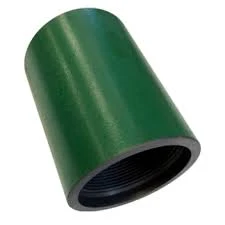- Afrikaans
- Albanian
- Amharic
- Arabic
- Armenian
- Azerbaijani
- Basque
- Belarusian
- Bengali
- Bosnian
- Bulgarian
- Catalan
- Cebuano
- Corsican
- Croatian
- Czech
- Danish
- Dutch
- English
- Esperanto
- Estonian
- Finnish
- French
- Frisian
- Galician
- Georgian
- German
- Greek
- Gujarati
- Haitian Creole
- hausa
- hawaiian
- Hebrew
- Hindi
- Miao
- Hungarian
- Icelandic
- igbo
- Indonesian
- irish
- Italian
- Japanese
- Javanese
- Kannada
- kazakh
- Khmer
- Rwandese
- Korean
- Kurdish
- Kyrgyz
- Lao
- Latin
- Latvian
- Lithuanian
- Luxembourgish
- Macedonian
- Malgashi
- Malay
- Malayalam
- Maltese
- Maori
- Marathi
- Mongolian
- Myanmar
- Nepali
- Norwegian
- Norwegian
- Occitan
- Pashto
- Persian
- Polish
- Portuguese
- Punjabi
- Romanian
- Russian
- Samoan
- Scottish Gaelic
- Serbian
- Sesotho
- Shona
- Sindhi
- Sinhala
- Slovak
- Slovenian
- Somali
- Spanish
- Sundanese
- Swahili
- Swedish
- Tagalog
- Tajik
- Tamil
- Tatar
- Telugu
- Thai
- Turkish
- Turkmen
- Ukrainian
- Urdu
- Uighur
- Uzbek
- Vietnamese
- Welsh
- Bantu
- Yiddish
- Yoruba
- Zulu
Exploring the Functions and Types of Petroleum Tubing Couplings in Oil Exploration
Understanding Petroleum Tubing Couplings Their Role and Importance
Petroleum tubing couplings are a crucial component in the oil and gas industry, widely used to connect segments of tubing that facilitate the extraction of hydrocarbons from subterranean reservoirs. These couplings ensure the structural integrity, leak prevention, and overall efficiency of the entire drilling and extraction process.
At their core, petroleum tubing couplings are mechanical devices that join lengths of tubing together, allowing for the continuous transport of crude oil, natural gas, or other fluids. Given the harsh environments in which they operate, these couplings are designed to withstand extreme pressures and temperatures, making materials used in their construction particularly important. Common materials include steel and various alloys, selected for their strength, durability, and resistance to corrosion.
One of the primary functions of tubing couplings is to create a hermetic seal that prevents leaks during the transportation of fluids. In oil and gas operations, any leak can lead to inefficiencies, increased costs, and potential environmental hazards. Therefore, couplings are engineered with precision to ensure they fit snugly and securely with the tubing segments, minimizing the chance of failure.
The design of petroleum tubing couplings often employs various threading techniques
. The most common types are API (American Petroleum Institute) couplings, which have specific dimensions and tolerances that ensure compatibility with the corresponding tubing. API couplings are standardized to ensure that they can be universally used across different rigs and systems, promoting interoperability.petroleum tubing coupling

Another significant feature of petroleum tubing couplings is their ease of installation and maintenance. The installation process must be efficient, as downtime can lead to substantial financial losses. Many couplings are designed to be installed using basic tools and require minimal downtime to ensure that operations can resume quickly. Once in place, periodic maintenance checks ensure that the integrity of the couplings remains intact, prolonging their lifespan and enhancing the overall safety of the operation.
In recent years, advancements in technology have led to the development of more robust and efficient coupling designs. Innovations such as the introduction of non-torque connections or enhanced materials that resist fatigue and corrosion have revolutionized how couplings are perceived and utilized in the field. This evolution reflects the ongoing need for the oil and gas industry to minimize risks and enhance operational efficiency.
Sustainability and environmental considerations are becoming increasingly important in the petroleum sector. As regulations tighten and the industry moves towards greener practices, the design and material selection for petroleum tubing couplings may also evolve. Eco-friendly options and materials that can withstand the tests of sustainability are likely to be prioritized.
In conclusion, petroleum tubing couplings play an indispensable role in the oil and gas extraction process. As the industry continues to innovate, these components will adapt to meet the challenges of reliability, efficiency, and sustainability. Understanding how these couplings function and the technology behind their design is essential for ensuring safe and successful drilling operations.
-
Tubing Pup Joints: Essential Components for Oil and Gas OperationsNewsJul.10,2025
-
Pup Joints: Essential Components for Reliable Drilling OperationsNewsJul.10,2025
-
Pipe Couplings: Connecting Your World EfficientlyNewsJul.10,2025
-
Mastering Oilfield Operations with Quality Tubing and CasingNewsJul.10,2025
-
High-Quality Casing Couplings for Every NeedNewsJul.10,2025
-
Boost Your Drilling Efficiency with Premium Crossover Tools & Seating NipplesNewsJul.10,2025







